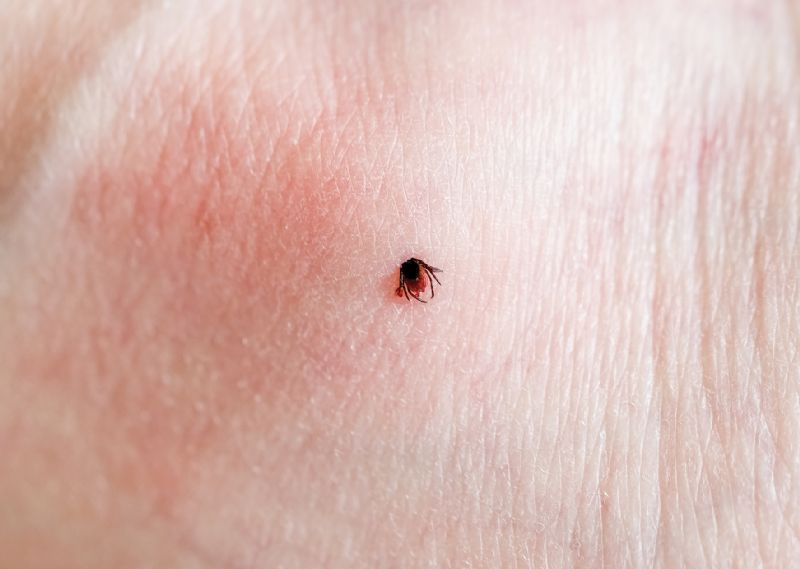- Home
- News, Articles & Reviews
We are hiring! Please click here to join our growing magazine delivery team in Gloucestershire!

Lyme Disease
All Areas > Health & Beauty > Medical Health
Author: Kirsty Lilley, Posted: Friday, 22nd November 2024, 09:00
To the delight of comedy fans, Miranda Hart has recently made a welcome return to our screens. The recent publication of her new book, ‘I Haven’t Been Entirely Honest with You’, outlines her struggles to recover from the debilitating effects of Lyme disease.
Miranda explores the many things which have helped her recovery, and this would be an interesting read for anyone else struggling with chronic fatigue.
Lyme disease is a bacterial infection contracted through bites from an infected tick, a tiny insect-like creature. Not all ticks carry the bacteria which cause the disease, but it is good to be aware of ticks and the process of safely removing them.
Ticks are found all over the UK but are much more prevalent in grassy and wooded areas in southern and northern England, and the Scottish Highlands.
What to do if you are bitten
Check to see if the tick is embedded in the skin. If so, do not just pull the tick out without guidance. Call NHS 111 for advice or refer to the website www.lymedisease.com
Check the rest of your body for the presence of any other ticks. The NHS website also has information on how to safely remove a tick using a pair of tweezers or a special tick removal device obtained from a chemist. To find out more, visit www.nhs.uk/conditions/lyme-disease
What next?
If you manage to remove the tick safely, disinfect the bite site with an antiseptic wipe and monitor the area to track any changes. You may want to draw a circle around the bite to help you notice if it begins to grow. It’s also a good idea to take photographs of the area and to look out for any rashes which may appear.
Over the coming days, weeks and months, be aware of other symptoms which may fluctuate and have a delayed onset. If you are concerned, please visit your GP.
Other symptoms
Early symptoms may include fatigue, joint pain, digestive issues, fever and chills or headaches. Later onset symptoms may include pain and swelling in the joints, problems with the nervous system, chronic fatigue, vision and hearing problems, circulatory problems, vertigo, and dizziness. Again, you can refer to www.lymedisease.com for symptoms not listed here.
Diagnosis and treatment
To assist your GP in making an accurate diagnosis of Lyme disease it may be helpful to record the sequence of events that led up to the infected bite, such as where you were and any symptoms you may have noticed, including the presence of a rash at the site.
There are two types of blood tests available to identify the bacteria which cause Lyme disease, but they are not always reliable in the early stages. You may need to be re-tested at a later date if your symptoms persist, even after a negative result.
Treatment of early stage Lyme disease usually relies on antibiotics prescribed with a full patient history by the GP. You may need to take the antibiotics for twenty eight days and it is important that you finish the full course. It is also important to be aware that successful treatment of Lyme disease does not make you immune to future infections.Copyright © 2025 The Local Answer Limited.
Unauthorized use and/or duplication of this material without express and written permission from this site's author and/or owner is strictly prohibited. Excerpts and links may be used, provided that full and clear credit is given to The Local Answer Limited and thelocalanswer.co.uk with appropriate and specific direction to the original content.More articles you may be interested in...


© 2025 The Local Answer Limited - Registered in England and Wales - Company No. 06929408
Unit H, Churchill Industrial Estate, Churchill Road, Leckhampton, Cheltenham, GL53 7EG - VAT Registration No. 975613000You are leaving the TLA website...
You are now leaving the TLA website and are going to a website that is not operated by us. The Local Answer are not responsible for the content or availability of linked sites, and cannot accept liability if the linked site has been compromised and contains unsuitable images or other content. If you wish to proceed, please click the "Continue" button below:




